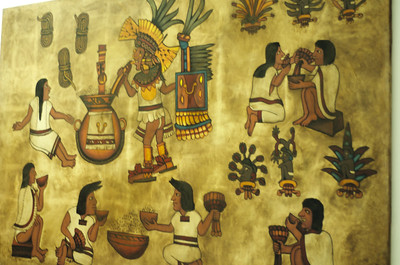Shot, shot, shot! This is the first thing that comes to my mind when I think about tequila. It is a great party starter and the reason for many unforgettable moments. But, have you ever wondered what exactly tequila is? Where does the tequila come from? Here you will learn everything about tequila’s origin.
What is tequila?
Tequila is a strong Mexican alcoholic drink (35% to 55% alcohol volume), made of distilled blue agave plants and produced in an exclusive area in and near the state of Jalisco (Guanajuato, Michoacan, Nayarit, and Tamaulipas). The tequila belongs to the mezcals, a group of spirits that are all made from agave plants, but contrary to the rest, tequila can be made only from a blue agave plant. You can see the full specification of the Mexican standard NOM-006-SCFI-2012.
For more interesting facts about tequila, check out this article too.

Where did the tequila originate?
The history of tequila could be traced back to the 16th century near the town of Tequila. The native Aztec tribes were already producing an alcoholic beverage called pulque, even before the Spanish came. It was made from fermented agave plants, but it has only between 5 and 7 % alcohol and it has milk-like color.
When the Spanish came, they brought their brandy with them. But as you can imagine, there was a limited amount of space in their boats for brandy, and it eventually run out. Then, thanks to the “need” for strong spirits, they turn their eyes towards the local alcohol production.
| Follow PackAndGo.info at: | |
| YouTube | @packandgo. |
| @packandgo.info | |
| X | @packandgoinfo |
| Bluesky | @packandgo.bsky.social |
| @packandgo.info | |
| TikTok | @packandgo.info |
They used their knowledge about making brandy, used the local ingredients like the agave, and created a mezcal drink (what is mezcal?) that they named tequila, because of the name of the town Tequila. This is the origin of the word tequila, thanks to the Tequila town where it was created.
The first known producer of tequila was Don Pedro Sánchez de Tagle in the first tequila factory in Tequila, Jalisco in 1600.
Check out the process of producing tequila here.
If you want to know more about mezcal, read this article.

All types of tequila explained
-
Silver tequila (Tequila Blanco). This is fresh tequila that has less than 2 months of aging inside an oak container. Usually, it does not have additives or colors. It could be bottled directly after the distillation process and it is the cheapest tequila. It is the most used type of tequila for cocktails.
-
Gold Tequila (Tequila Joven or Tequila Oro). The golden tequila has a bit of color already, thanks to a blending process between silver tequila and aged tequila, extra-aged tequila, or ultra-aged tequila. It can also have additives like caramel coloring, oak extract, glycerin, and sugar syrup.
-
Aged tequila (reposado). The aged tequila has at least 2 months of direct contact inside an oak container. It can be blended with different types of tequila, have additional flavors, and mixed with water too. It still has a relatively affordable price and has good taste.
-
Extra-aged tequila (Añejo). The extra-aged tequila or tequila añejo must have at least 1 year inside an oak container with a maximum capacity of 600 liters. The tequila can be mixed with water to get the right alcohol percentage. The añejo tequila is considered high-class tequila and it is relatively expensive.
-
Ultra-aged tequila (Extra Añejo). The extra añejo tequila has at least 3 years inside oak containers with a maximum volume of 600 liters. This is the most expensive and premium type of tequila on the market. It is rare and very tasty.
Outro
Tequila is to Mexico what cognac brandy is to France. The pride of the nation and an excellent alcoholic drink, with a strong culture and historic importance. Now you know more about this party drink. Share with us your experiences from previous tequila parties. We are sure that there are many stories to tell.
| Follow PackAndGo.info at: | |
| YouTube | @packandgo. |
| @packandgo.info | |
| X | @packandgoinfo |
| Bluesky | @packandgo.bsky.social |
| @packandgo.info | |
| TikTok | @packandgo.info |
